Perennial gardening in February focuses mostly on two things: starting plants for the upcoming year (and years, since we’re talking perennials here) and prepping for the planting that’s coming up in the next month or so.
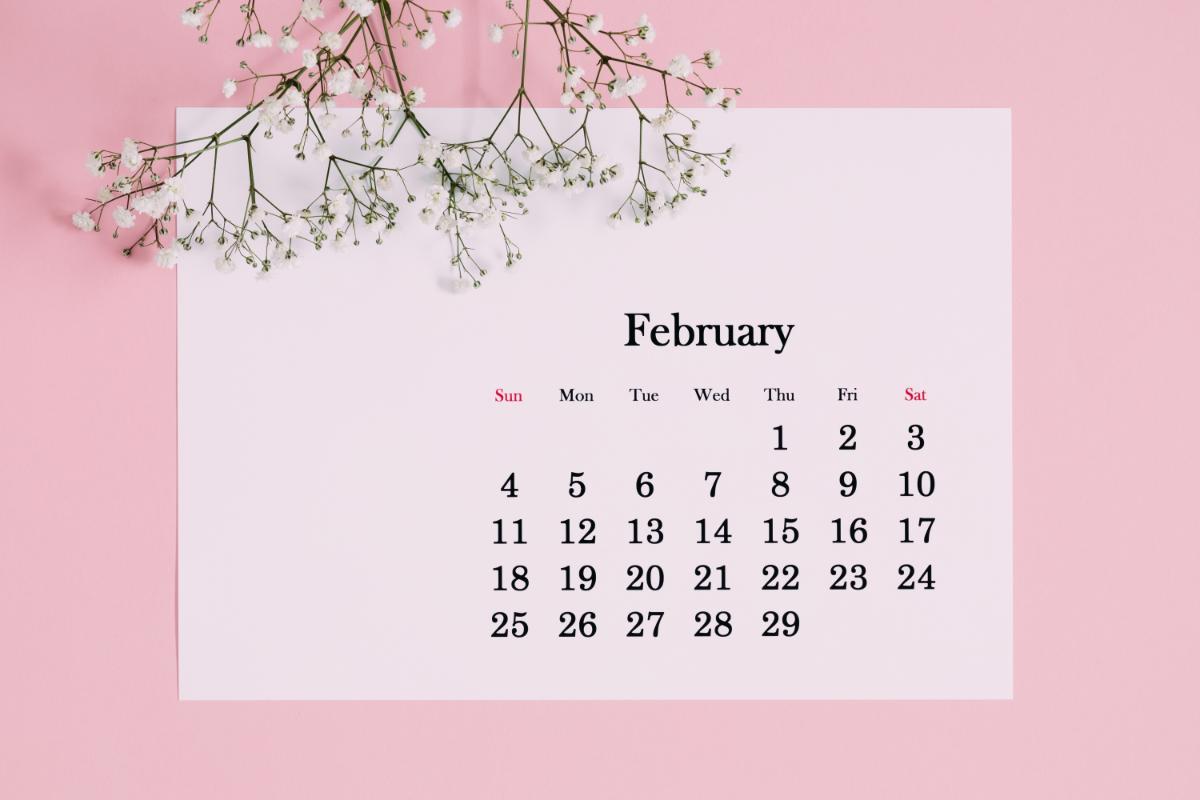
As the saying goes, gardening doesn’t start in the spring; it starts in January “with the dream” (Josephine Nuese). And while we can still dream in February, too, we should start to take action as well.
Jump to:
- 10 Perennial Tasks for Perennial Gardeners in February
- 1. Cold Stratify Perennial Seeds
- 2. Start Perennial Seeds
- 3. Winter Sow Perennials
- 4. Scout and Take Dormant Cuttings for Propagation
- 5. Plant Forcing Bulbs and Cuttings
- 6. Check Plants for Heaving
- 7. Save Upcycled Cardboard, etc. For New Beds and Spring Gardening
- 8. Make Your Own DIY Permanent Plant Markers
- 9. Attend a Local Garden Show
- 10. Take an Online Class or Workshop
- Bonus: Check Overwintering Dormant Plants
- Planting Before We Know It!
10 Perennial Tasks for Perennial Gardeners in February
What sort of action? How about these top ten, for starters:
1. Cold Stratify Perennial Seeds
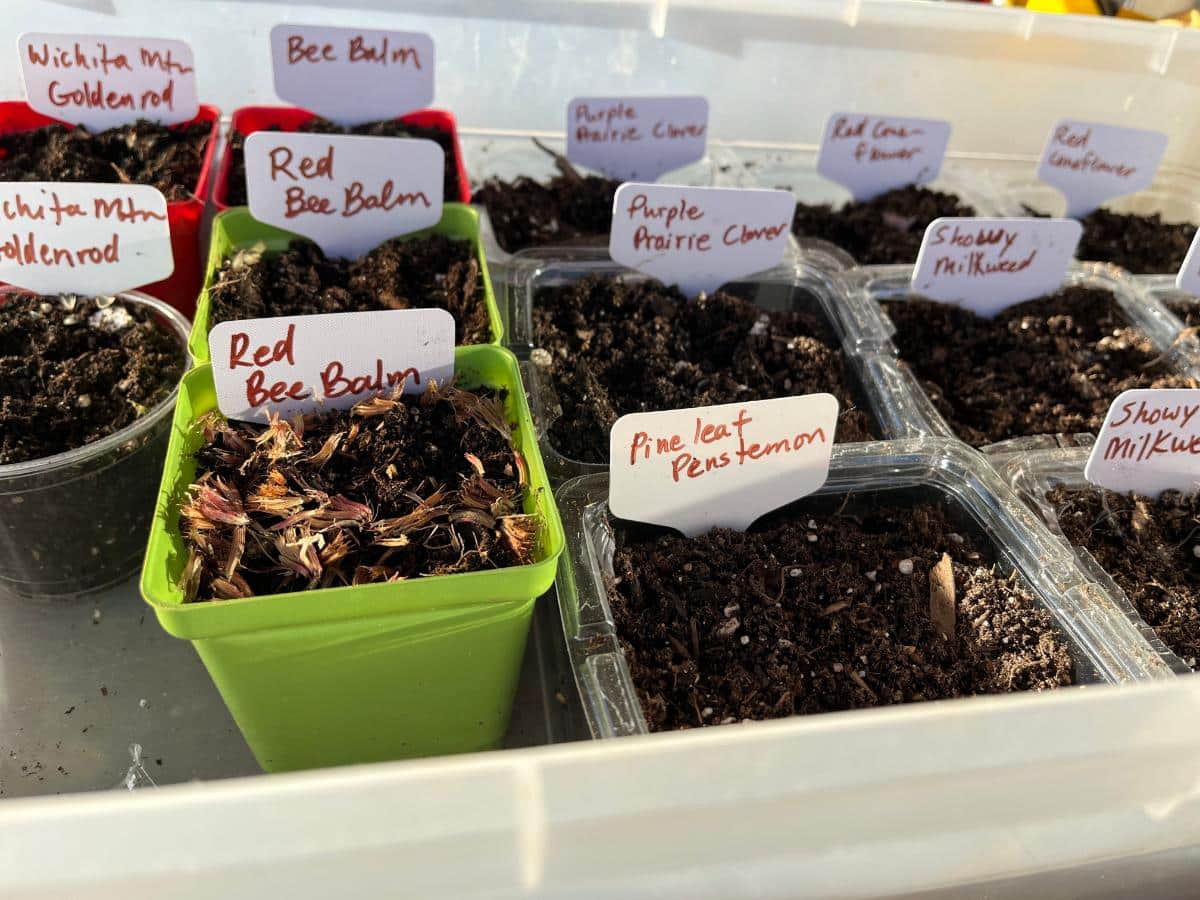
Many perennials need to be cold-stratified before they will sprout. Others will greatly benefit from it, and it can increase your germination rates for hard-to-start perennials plants and herbs by a lot.
In nature, winter takes care of this. But we often have to recreate that natural action since we’re selecting seeds and starting them on our own.
Some seed companies will cold treat seeds, but many do not (and if you’re not sure if they did, and it’s a plant that needs cold stratification, it’s best to go ahead and do it).
Cold stratification is just a fancy way of saying seeds need to experience low temperatures (usually freezing or at least near freezing or below) for one to three months to break dormancy and sprout.
This is best done in a moist and cold environment. Inside, you can use your refrigerator; outside, nature will help you if your area gets cold enough.
However you choose to cold stratify your seeds, the minimum amount of time they would need is 30 days. Some need as long as 90 days (with many seeds falling somewhere in between). January and February are good times for stratifying seeds before you start them.
2. Start Perennial Seeds
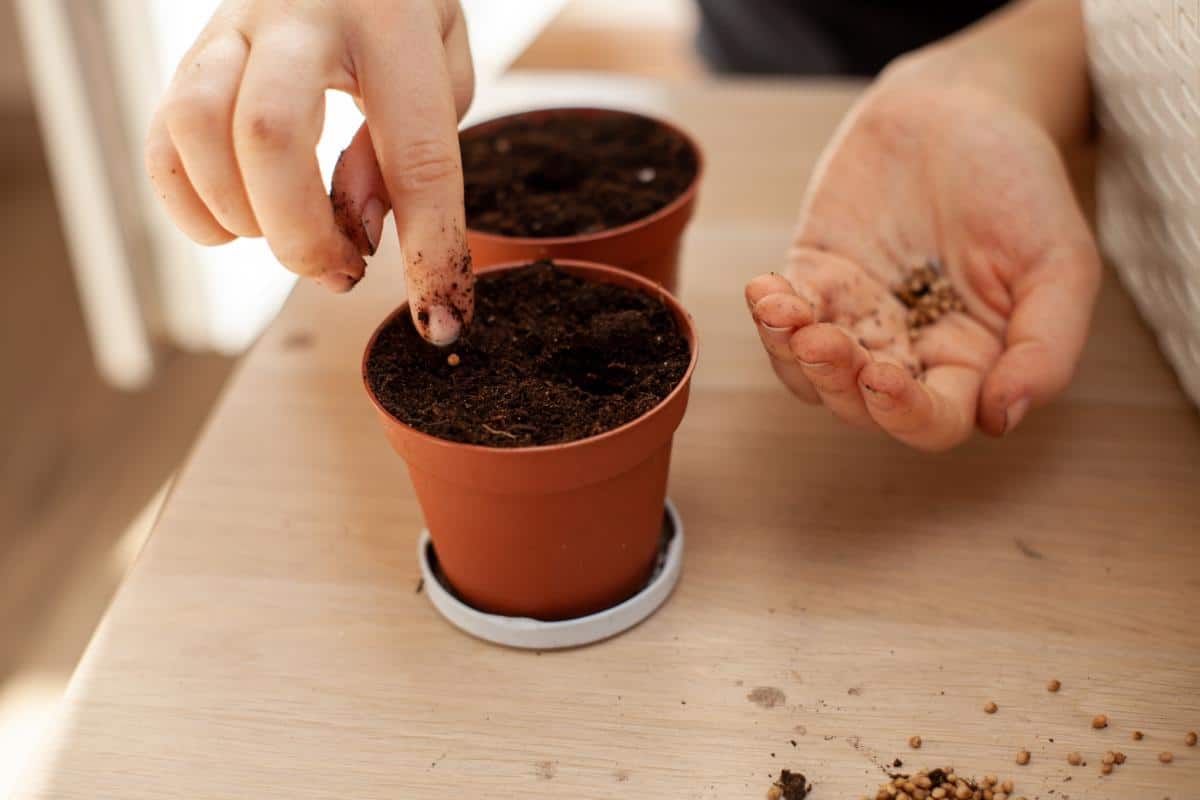
Starting perennials from seed saves a lot of money, gives you control over what you can plant, opens up more variety options to you, and allows you to plant more plants within the same (or smaller) budget.
But you have to think ahead and do it early on. Much earlier than you would start most ornamental and vegetable annuals.
Perennial seeds germinate more slowly, on average, and once they do, the plants grow more slowly. They're in it for the long haul, so they don’t experience the fast growth rates that annuals do. For the largest transplants, you want the earliest start you can get.
Fortunately, it’s almost impossible to start perennial seeds too early. The sooner you start, the larger your transplants. Nothing is lost or harmed.
Of course, you may need to work in time for cold stratification. You can stratify seeds before or after you’ve planted them in soil or in seed germination pots in the refrigerator or in an unheated or minimally heated space. (In fact, stratifying in germination pots is a good way to get them the moisture they need).
Include perennial herbs and perennial vegetables in this category, too.
A good way to combine cold stratification and planting is the following:
3. Winter Sow Perennials
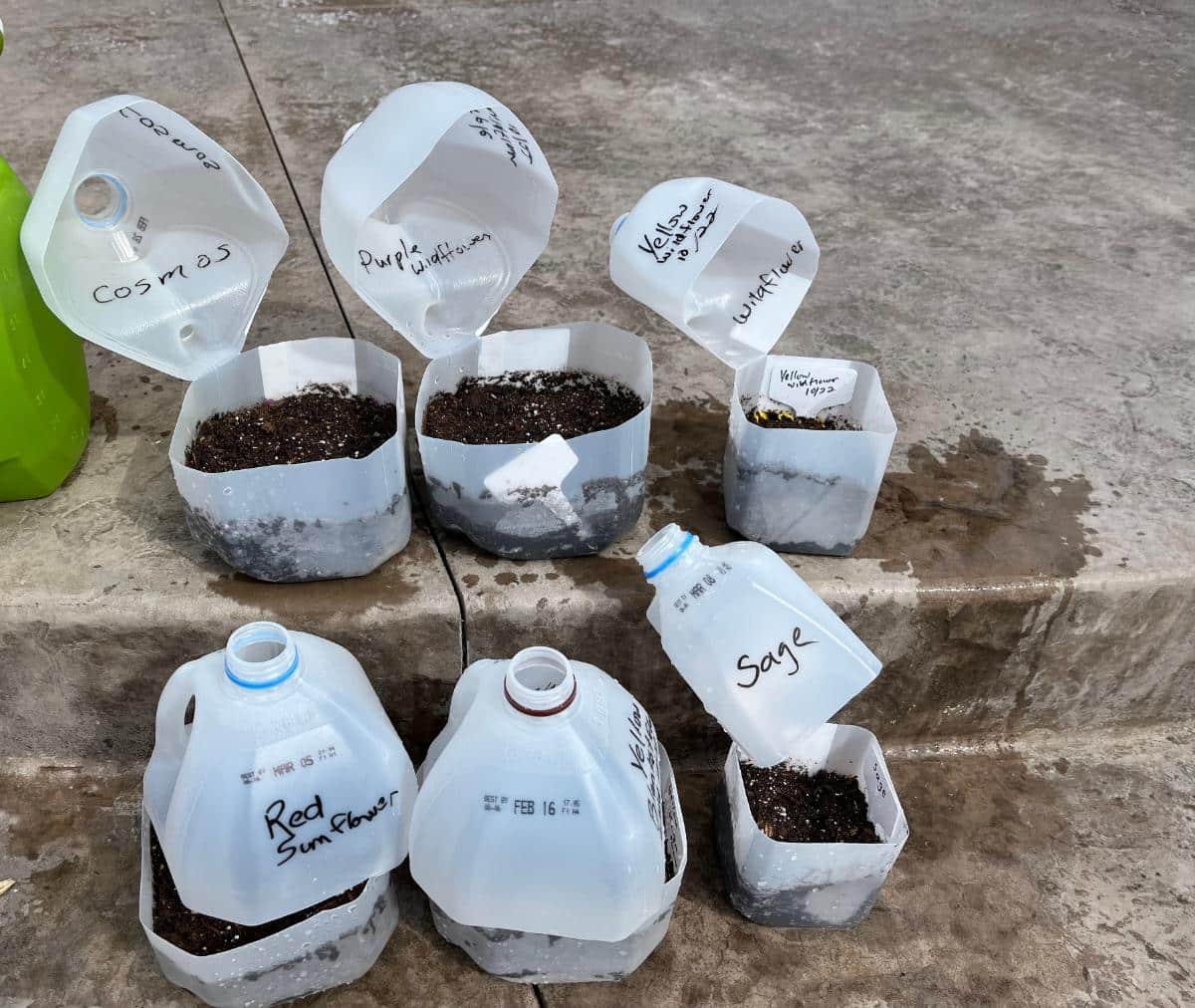
Winter sowing is a method that works with nature to both cold stratify seeds and to start them. This is the method you see people doing in converted milk jugs. The seed is sown in potting or seed-starting soil in the jugs, moistened, then set outside in the cold.
The jugs become miniature greenhouses as the days warm and sunlight gets stronger. The time outside takes care of the cold stratification, and the seeds respond naturally when conditions are right.
This is one option for starting perennials from seed. You can still start them indoors under grow lights after the seeds are stratified, which can give the plants an earlier start.
The big benefit to starting perennials by winter sowing is that this is a “set it and forget it” method that takes care of stratification without having to fill your fridge up with germination pots or baggies of seed on paper towels. (These are good cold stratification methods, by the way, but winter sowing outdoors also relies less on utilities and grow lights, etc.).
4. Scout and Take Dormant Cuttings for Propagation
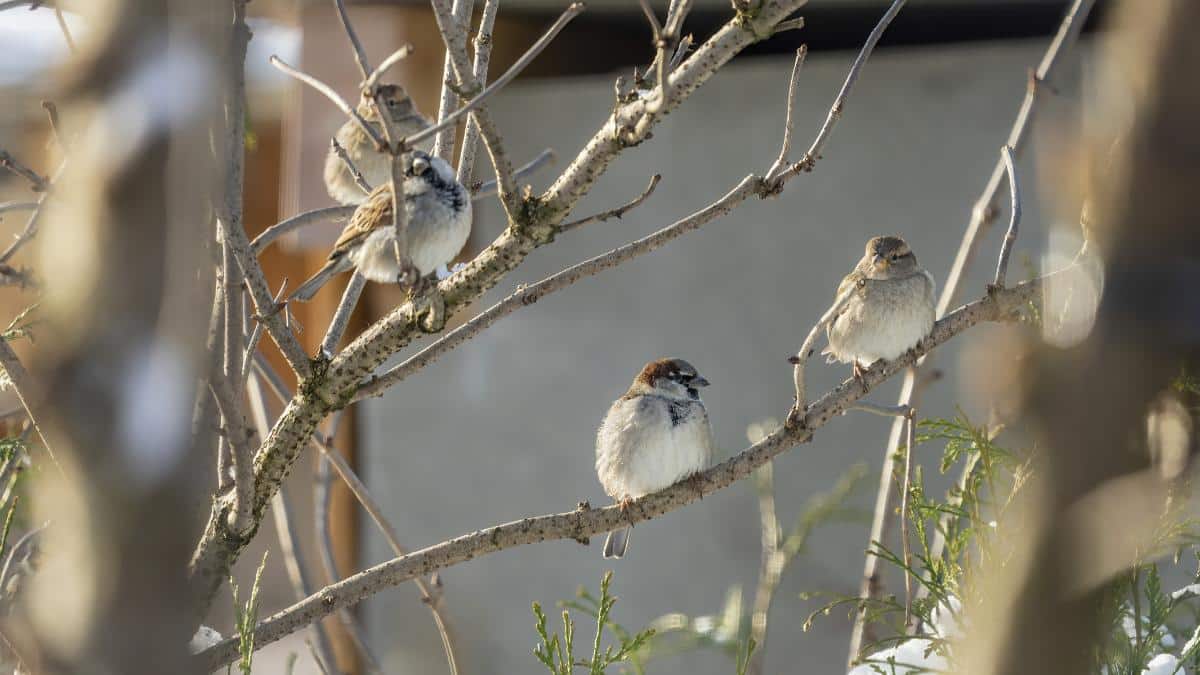
You might not be thinking about propagating plants in the middle of winter, but this is actually a very good time for dormant woody plants to be propagated.
Woody shrubs, fruit trees, bushes, berries, and more can be easily propagated from dormant woody cuttings (elderberries and blueberries are two of the best).
When propagating from dormant cuttings, you really want to start before buds break and leaves start to grow. Before this, the plant will spend its early, cooler days concentrating on root growth. It also has no leaves to draw its nutrients and moisture away from the roots and stem.
Many plants will start breaking dormancy by March. That means that January and February are prime times for taking woody dormant cuttings.
Once you take the cuttings, you can either store them in the refrigerator with a damp paper towel for up to two or three months and then propagate them in the ground, or you can start them right away in pots with sand, soil, or another propagating medium. This will give them an earlier start and give you perennials with roots ready to plant outside when early spring arrives.
5. Plant Forcing Bulbs and Cuttings
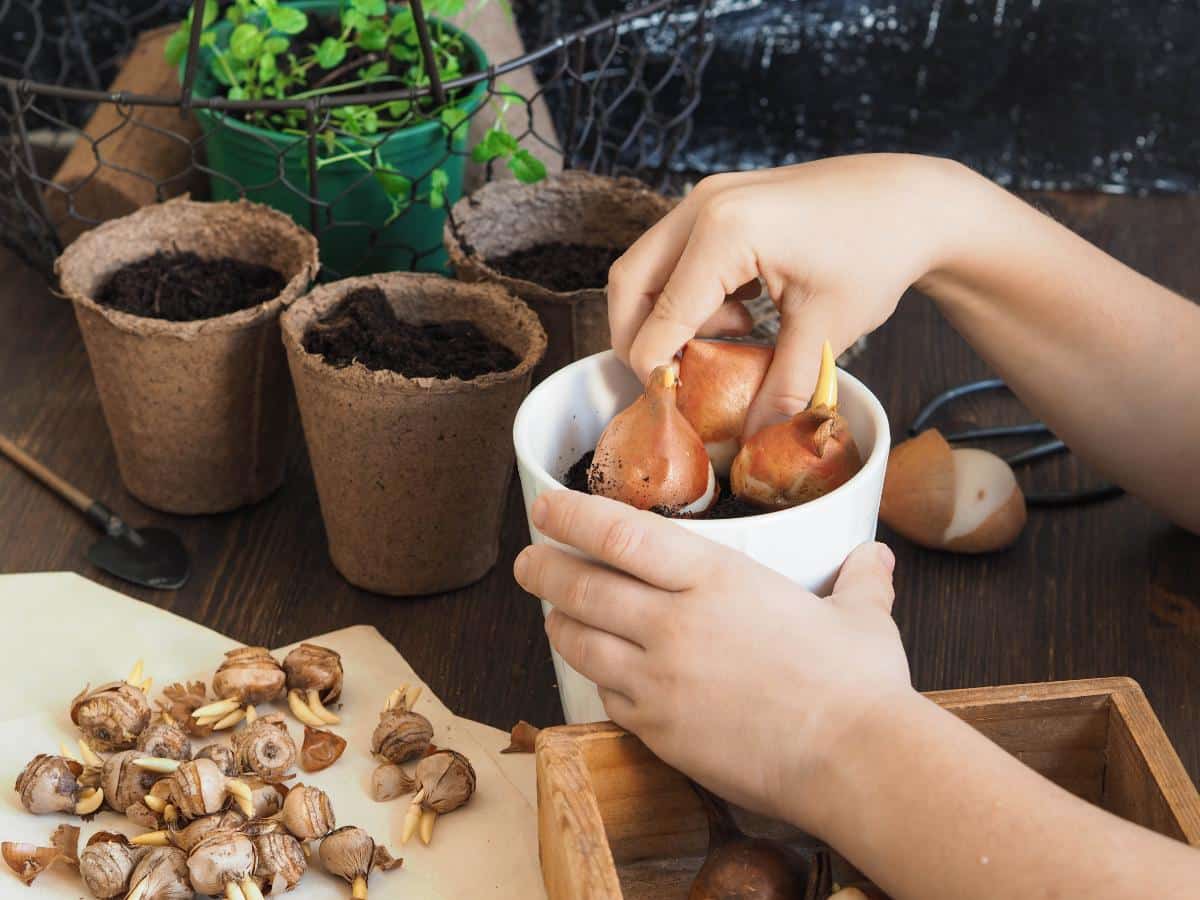
It’s time to take those cold-treated bulbs out of your fridge or cold space that you put there early in the winter. Pot them up so you can enjoy some flowering freshness in the weeks of late winter.
You can also take stem or branch cuttings from forsythia and fruit trees to force them into bloom inside—more fresh flowers to help you through the last of the winter doldrums!
6. Check Plants for Heaving
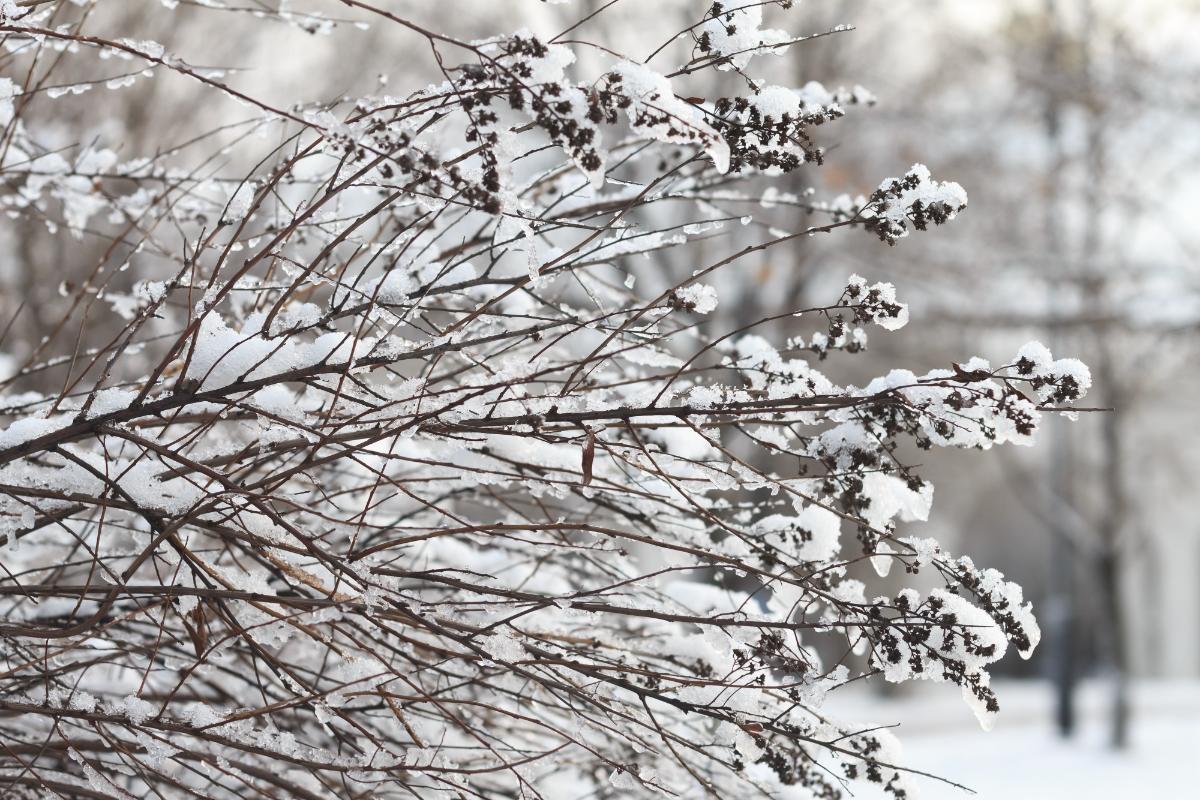
One of the biggest contributors to winter kill for perennials is when plants are heaved up out of the ground by frost or repeated freeze-and-thaw periods. Freeze and thaw periods are becoming more common, even in cold locations.
Take a walk around your property. Check out your perennial beds and plantings.
- Look for signs that plants or shrubs have been pushed up out of the ground or for plants that may be leaning with roots exposed
- Look for hollow spaces or spots where sinkholes may have formed
- Look for places where rodents or animals may have dug out around or under plants
Anywhere you find roots showing or holes close to your plants, fill it in with some soil or at least a heavy mulch. It helps to put some mulch on top, too.
The finished product doesn’t have to be pretty; you just need to get some coverage over roots that are exposed or close to being exposed. You can dress it up when spring comes!
7. Save Upcycled Cardboard, etc. For New Beds and Spring Gardening
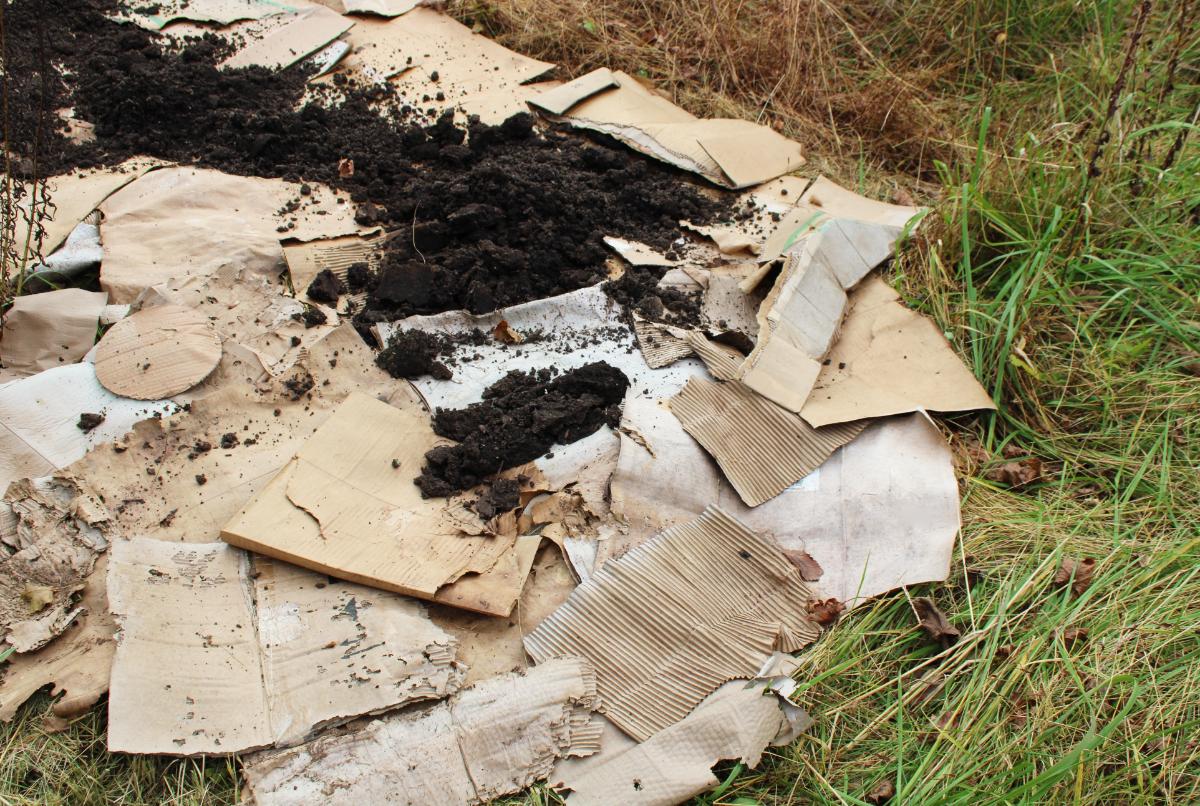
Cardboard (and newspaper, too) can be really useful for weed control and for creating no-till gardens and perennial beds.
Start putting aside large cardboard sheets and boxes now. Save up newspaper, too (just the flat matte type, not shiny or glossy papers). This will give you lots to work with in the early spring before weeds take hold and before they have much of a chance of getting ahead of you.
8. Make Your Own DIY Permanent Plant Markers

Let’s be honest. We’re all guilty of either forgetting what we started or of forgetting what is planted where. Every spring can be a new surprise as the plants come up, and you try to remember what those perennials and herbs are.
While you’re looking for something to pass the time until you can garden in earnest again, why not make some nice, permanent, decorative plant markers to go with your permanent plants?
Some ideas include:
- Metal-stamped plant markers (which are great because there is no paint or ink to fade or wear away)
- Painted rocks
- Carved rocks (Dremel drills work great for this!)
- Painted wood or slate markers
There are plenty of attractive ways to mark your perennial plants with markers that can stay in the garden right through winter—so that in the spring, you don’t have to be surprised or play guessing games!
9. Attend a Local Garden Show

February and March are good times to scout out a local garden show. Enjoy the plants. Gather information. See what local vendors and products you have available nearby.
Get inspired!
See plant displays and garden designs. And then take some new favorite perennials, seeds, or bulbs home with you.
10. Take an Online Class or Workshop

Want to up your perennial gardening game? Learn more about something that’s challenged you? Get ideas and inspiration for new plant combinations or garden designs?
These short, dark days stuck indoors can be a great time to explore something new—from the warmth and comfort of your own home!
An online search should bring you a range of options, but here are a few to get you going:
- Learning with Experts Perennial Planting Design
- Backyard Wildlife from AARP
- University of Oregon FREE Basic Botany Course (on demand)
- Herbaceous Ornamentals course (on demand)
For something suited to your location and growing zone, check with local garden clubs, horticultural associations, botanical gardens, colleges, university extension services, or Master Gardener programs.
Bonus: Check Overwintering Dormant Plants
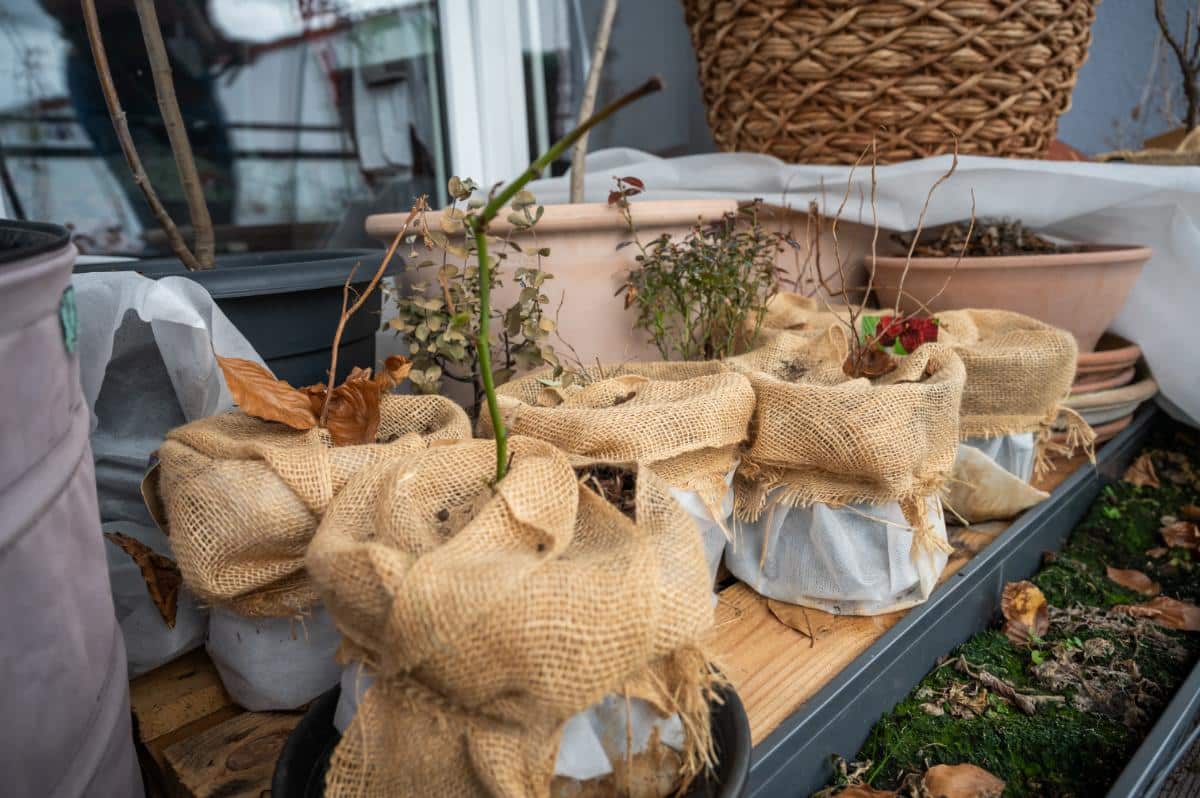
This is a tip we’ve mentioned in previous months, too, but it’s always smart to check your overwintering perennials and dormant plants that you may have tucked away—especially container plants, whether they’re indoors or out (but especially those indoors).
Check your pots and make sure they’re still moist to the touch. Water (sparingly) if the soil is drying out.
Remember that dormant plants need water and can’t survive complete soil dehydration. Keep the soil slightly moist. Check every two to four weeks to make sure they’ve still got enough water.
Planting Before We Know It!
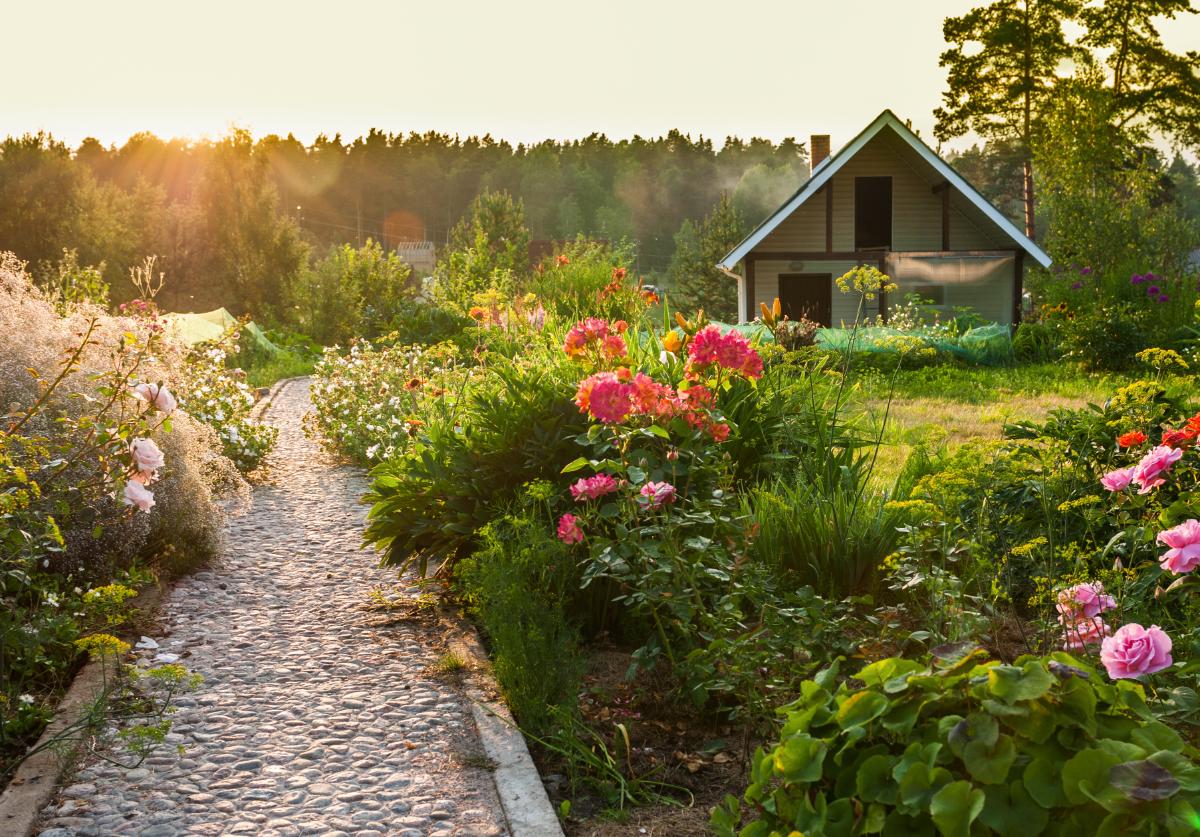
Of course, there are some of us who might be able to start putting perennials in the ground in February, but most perennial gardeners are probably not there yet. But we will be!
So, let’s set the stage for growing lots of plants, propagating our favorites, and having a lovely perennial garden season this year.
One of the main reasons more perennial gardeners don’t start more of their own plants from seed or dormant cuttings is that we don’t think about it until it’s too late. Perennial seeds especially need an early start. Winter is the time to collect dormant cuttings.
This is the month for you, perennial gardeners. Get growing!

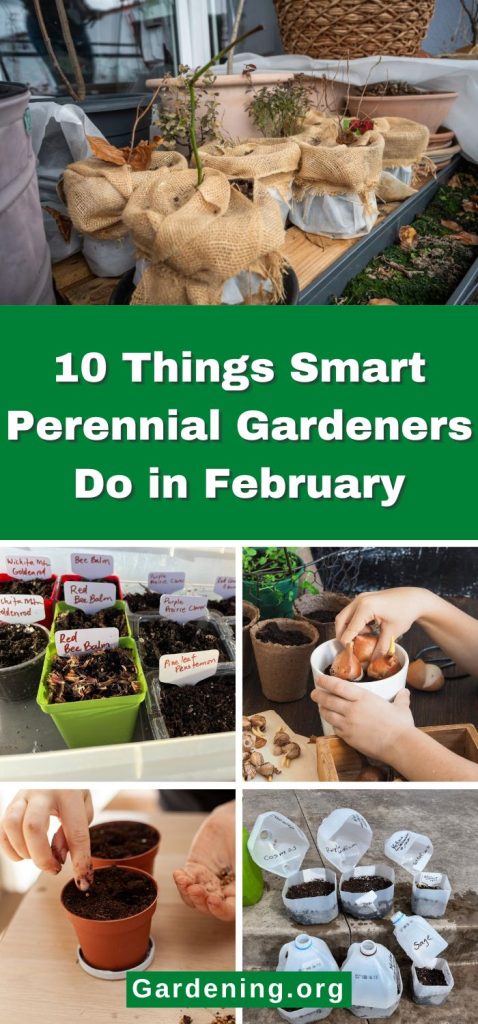
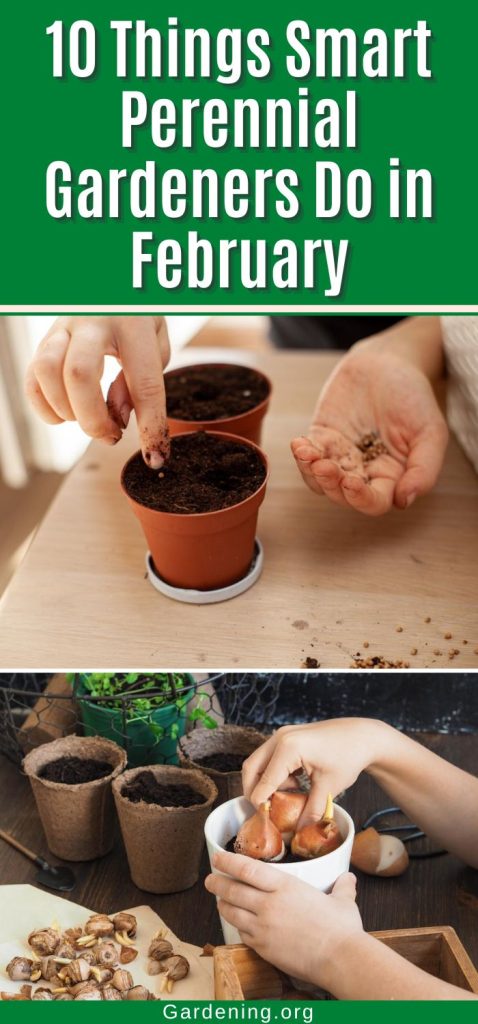
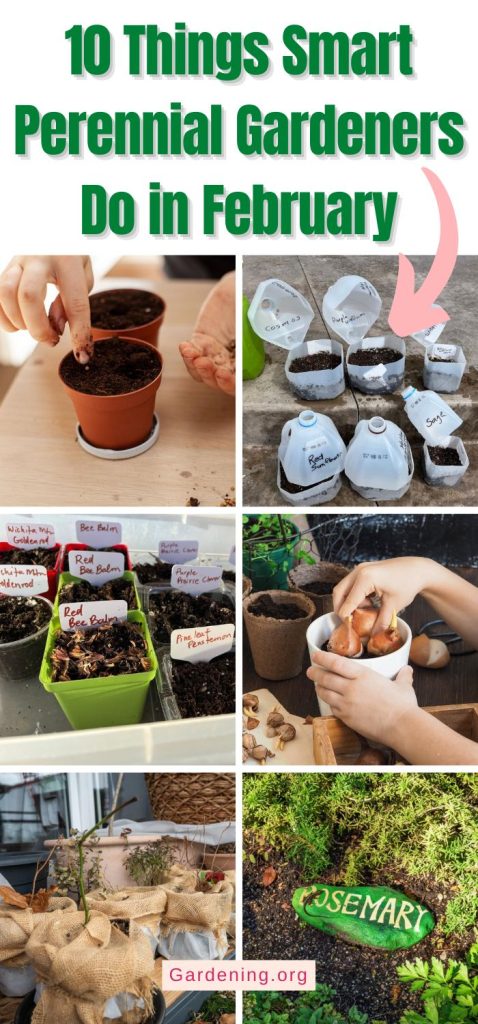
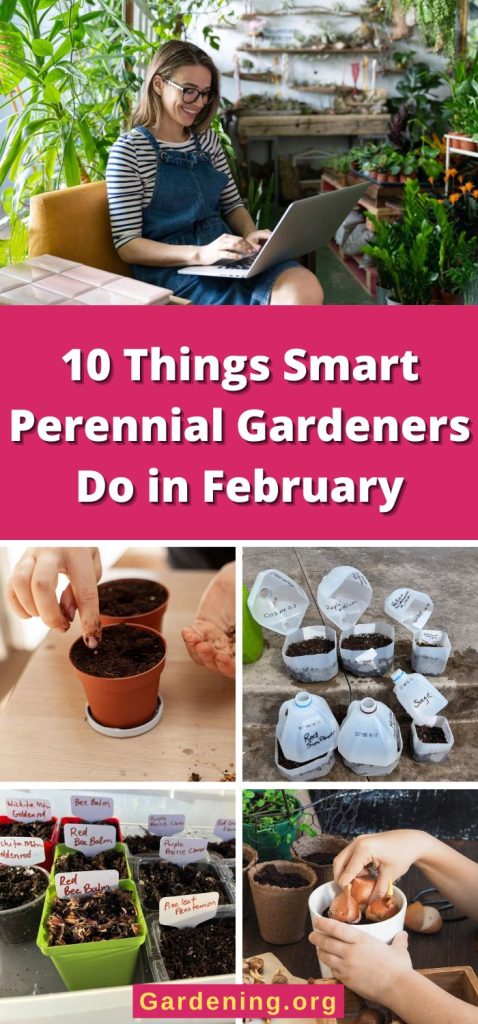
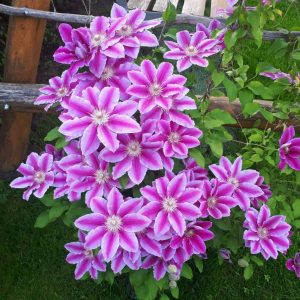
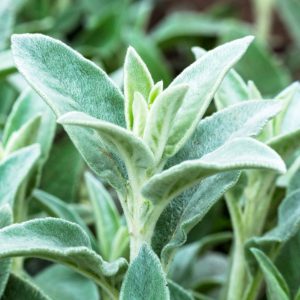


Donna
Hi,
I have so many seeds for flowers I want to plant in my garden, however I just have seen that we are going to have another cicada invasion this year and I am afraid to plant. Any advice?
Mary Ward
According to numerous resources, they prefer woody trees, shrubs, and their sap. Flowers and vegetables are not usually harmed, though you may find them resting on them.